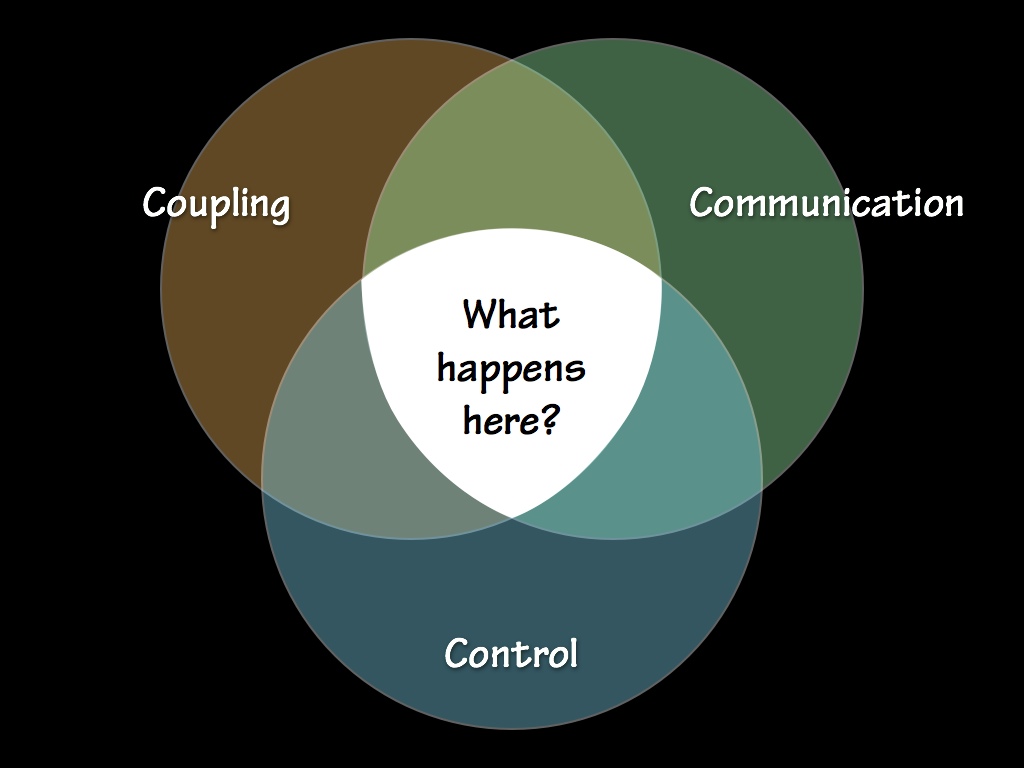Part 7 of a series on rethinking science and technology for the 21st century
Yesterday, I listened to respected economists discussing geoengineering; gave a Skype interview on nanotechnology from the comfort of my own home; and watched as reactions to Michael Jackson’s death spread through virtual web-based communities. Twenty years ago, when Jackson was at the height of his artistic powers, such a day would have been the stuff of science fiction. Now, it’s just business and usual.
Looking back over the past two decades, it’s easy to see how Coupling, Communication and Control have changed the world we live in. The impact of CFC’s on the ozone layer, the looming global warming crisis and the associated acidification of oceans are all testaments to how recent human actions are increasingly coupled to global environmental re-actions. Technological advances built on the back of our increasing control over matter – whether living or non-living – have led to profound changes in what we can achieve as a species. And the global communications revolution – from the rise of the internet to the emergence of social media – continues to bend previously rigid social, commercial and geographical boundaries.
Yet important as the changes associated with each of these individual “C’s” are, it is at their intersection that their true transformative nature is revealed. This is where ideas and influences spark off each other, leading to transformative leaps in innovation and impact…
To some extent we’re seeing this already. Modern global communications wouldn’t be possible without a whole raft of technological breakthroughs. Our impact on the environment is driven as much by our technologies and associated resource demands as by a growing world population, while solutions to the resulting consequences are technology-driven more often than not. And worldwide responses to global issues are being facilitated by increasingly sophisticated communications media.
As the overlap and integration between each of the three “C’s” grows, the rate of innovation is likely to accelerate. Yet the place where the really transformative stuff will occur is going to be at the center – at the confluence of advances in Coupling, Communication and Control. This is where we can expect game-changing innovations that make the impossible possible. It’s also where we are likley to see new technologies and ideas emerge that are potentially beyond our collective ability to handle with any degree of maturity.
And this brings us to the key science and technology-driven challenge we face as we head further into the twenty first century: How are we going to handle the powerful and transformative new opportunities and dangers arising from this confluence of coupling, communication and control, without messing things up?
In contrast to the rapid developments likely at this nexus of the three “C’s,” the inertia inherent in established institutions and ideas will resist change. And so unlike some, I don’t think we will adapt naturally to the challenges that are coming. Yet the result of ignoring them, assuming they are someone else’s problem, or trying to shoehorn them into outmoded ways of doing business, will most likely be social, economic and political collapse.
The alternative is to take a long hard look at what needs to be done in order to ride the coming wave rather than be engulfed by it. From twenty years ago, today’s world would look familiar yet different. Given the current rate of change, I suspect that the world twenty years from now will be unrecognizable. If we’re going to cope with the changes that are coming, we will need to learn how to change with them. And one of the first places to start will be the policies that guide the science and technology that are driving – and will help navigate – this confluence of coupling, communication and control.
Next time: Riding the wave: Rethinking science & technology policy
Notes
Rethinking science and technology for the 21st century is a series of blogs drawing on a recent lecture given at the James Martin School in Oxford. This is a bit of an experiment—the serialization of a lecture, and a prelude to a more formal academic paper. But hopefully it will be both interesting and useful. I’ll be posting a “rethinking science and technology” blog every week or so, interspersed with the usual eclectic mix of stuff you’ve come to expect from 2020science.
Previously: Nanoscale control: Leveraging biology
Next: Riding the wave: Rethinking science & technology policy


I really like how you’ve departed from the traditional models here. It is similar to a model I’ve proposed at http://www.integralfuturing.com. In my opnion, the concept in the center of your diagram is the knowledge/question cycle. See http://www.anti-knowledge.com for more info.